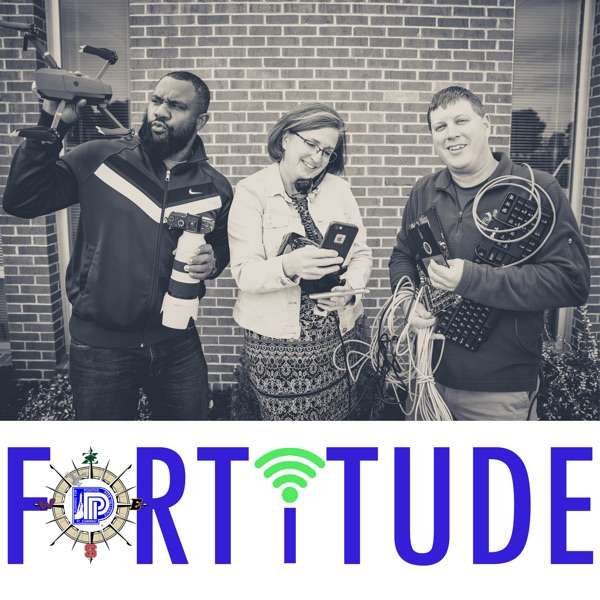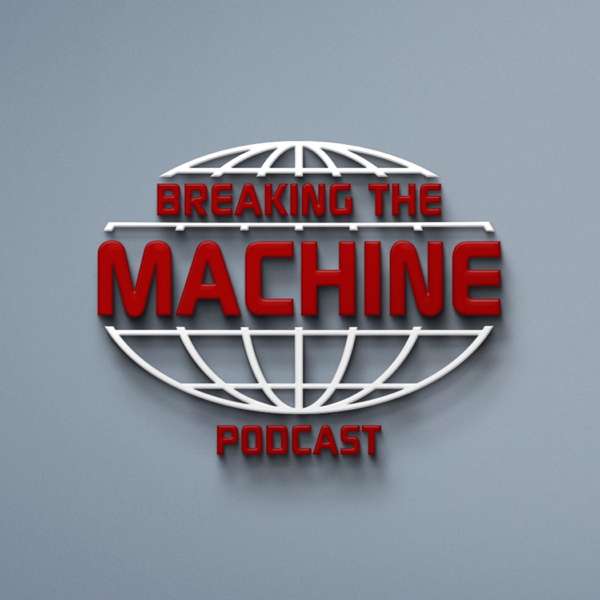Russ Altman: Today on The Future of Everything, the future of detecting DNA in your blood.
Now DNA is the building block of life. It is a relatively simple long molecule or polymer made out of four components or DNA bases which have one letter abbreviations, the famous ATCG, which stand for their chemical names. It’s like a string of beans, beads, beads, but it is long. A human genome is made of about three billion DNA bases, divided into 23 chromosomes. So if you add up the beads in each chromosome, you get about three billion. You get a genome from mom and you get one from dad. So you have two copies of the genome, mostly the same but obviously not identical, or six billion total.
Now DNA contains the blueprints for how your cells live, how they grow, how they interact with other cells, and like a computer program, it allows the cell to perform simple computations to make decisions about when and where things happen.
If this goes wrong, you can get cancer. Mutations in the DNA cause the computations and decisions to go wrong.
Other things can happen too. In the last ten years, researchers have learned that they can detect DNA in the blood. Now we knew that the cells in the blood had DNA, so that was not surprising, but what was surprising is that there is sometimes DNA from other cells in the body, often cells that have died and just released their DNA into the bloodstream. This is sometimes called cell-free DNA because it is floating in the blood and it’s not really part of a cell. Although this may seem like it’s junk, it offers evidence of lots of other processes going on in the body, processes diverse as cancer, pregnancy, stress on organs, or even death and many others.
Dr. Stephen Quake is a professor of Bioengineering, Applied Physics and Physics and Stanford University. Steve pioneered the detection of DNA in the blood and some its first applications.
Steve, what drove your interest in detecting DNA, and what was the first demonstration that this would actually be useful?
Stephen Quake: Well, my interest came actually when I became a father. My wife and I were in to see the doctor, and the doctor says you guys should think about getting amniocentesis. And it was seemed like a theoretical question and something we have time to think about. We said yeah, okay, that sounds like the right thing if recommending it.
Russ Altman: And this is a super risky procedure in many ways. A needle goes into the uterus near the baby to extract fluids.
Stephen Quake: Big needle right in the mom’s belly, right next to the fetus to try to grab a few cells, and so to do genetic testing. And we said yeah, it sounds like a good idea, thinking we schedule another appointment for it. Next thing we knew, the guy was turning around with a giant needle, plunges it right into my wife’s belly,
Russ Altman: Whoa.
Stephen Quake: Yeah, whoa, exactly. That was our response. And it’s the response of many people who undergo that certain invasive testing. And not surprisingly, there’s risk associated with doing that testing. Sometimes, you lose the baby and other health problems that might happen.
Russ Altman: How far into the pregnancy were you?
Stephen Quake: That’s typically done, I don’t know, around 14 weeks, something like that, 15 weeks, somewhere around there. And so that sensitized me to holy cow, there’s a problem here that you’re asking a diagnostic question, and there’s a lot of risk associated with it. And so I began to think are there ways to ask these genetic questions and do diagnostics without adding risk? And I eventually stumbled upon this old scientific literature about this cell-free DNA that you were mentioning, which, as it turns out, was first discovered as a phenomenon in 1948.
Russ Altman: That’s before Watson and Crick even articulated the importance of DNA for genetics.
Stephen Quake: It’s before the structure, and it’s before people knew. It’s roughly contemporary people first realized that DNA was the molecule of inheritance.
Russ Altman: Right.
Stephen Quake: Oswald Avery just that same year was working that out. So it was blood chemistry to those guys who did it. But the field stayed alive, and it was mostly people doing cancer research. And eventually, it was figured out that when you’re pregnant, some of the DNA in your blood comes from the fetus, and that was worked out in the late 1970s. And –
Russ Altman: And so this is not a large amount, I’m guessing.
Stephen Quake: It’s not much, just a few percent of what’s there, so it’s a very challenging measurement problem and the decade-long search to try to figure out how to really use that to build a diagnostic that would allow you to understand the genetics of the baby without having to risk the baby’s life. And we saw that at Stanford, and it was through the work of a really terrific graduate student in my lab when the bioengineering department was young, Christina Fan. And that has now been the first real clinical application of cell-free DNA in diagnostics, and that’s how I got into it, to answer your question.
Russ Altman: So in that initial demonstration or in your first industrial translation, what are the things that we can actually detect from the DNA of a fetus in the mom’s blood?
Stephen Quake: Well, when we published the paper on this, started getting press inquiries. When is this gonna be available in the clinic? I said, I don’t know, decades, something like that.
Russ Altman: That’s usually the answer.
Stephen Quake: It takes a long time, right. It turns out people jumped on like you wouldn’t believe. Clinical trials were launched immediately. Within three years, the first real commercial diagnostic products had been launched, and now it’s four million women a year, something like that, get the test, and the use of amniocentesis has plummeted.
Russ Altman: And so now you do this as a screening before you make the decision about the amnio. Is that the general use of it?
Stephen Quake: That was the initial indication, and it’s very quickly moving to replacing amnio completely.
Russ Altman: Completely, yeah. And what kind of things can we diagnose in the fetus these days?
Stephen Quake: So the major genetic disorders you have for live births are things like Down syndrome; that’s number one. And it’s an aneuploidy is what it’s called technically, means the extra copy of a chromosome. And there’s a few other disorders, which are extra copies of chromosomes that are also detected with this approach.
Russ Altman: Awesome. So that has had big-time market impact, and it’s changing people’s lives. I think it’s on the street now. People know you can get this blood test instead of the amnio, so it didn’t stop there. Now you had this hammer, and it worked. You hit one nail. What was the next nail you guys turned your attention to?
Stephen Quake: Well, after we published that, word got around Stanford that I was interested in non-invasive diagnostics. And I got a call one day from Hannah Valantine, who’s a cardiologist –
Russ Altman: Great cardiologist.
Stephen Quake: Yep, and she says, well Steve, we got a similar problem in heart transplants. We give people a new heart, and after the operation, we then go biopsy that new heart and rip out pieces of the tissue to make sure it’s not being rejected by the body. And we’re doing that every couple of months. And so is there a blood test that could replace that? Same sort of problem, patients were having this painful, risky procedure, and there was a question of whether it could be replaced by a simple blood test. And so we thought about that a bit, and –
Russ Altman: The key opportunity here is that the DNA and the heart that belongs to the donor is not gonna match the DNA of the person who received the heart, and, like the baby and the mom, because those are different DNAs, you have a chance of picking it up.
Stephen Quake: Yeah, the key there is that the DNA is different. A little different with the baby and the mom because we don’t use differences in their DNA. But in the case of the transplant, absolutely. The whole principle is based on there being different genomes of every cell in the heart compared to other cells in the recipient’s body. And we monitor those so-called polymorphisms, those changes.
Russ Altman: And so you went after this, and you were indeed able to show that people who were in rejection were spilling, so to speak, the heart DNA into the blood, and maybe we can avoid some of those biopsies.
Stephen Quake: Absolutely. So we did a proof of principle study with some bank samples she had, and then we wrote a grant together and were able to do a very large study on both heart and lung transplants where pretty much every transplant patient at Stanford for those two organs was enrolled in our study over a period of three years, and were able to validate it. It was amazing. One of my kids was in elementary school at the time, and there was a new family who was in the class that year. And at the end of the year, we got a note around saying that, well, there’s a family that’s in town because they were at the Ronald McDonald House. One of their kids was in the hospital and very ill, and would anyone wanna put them up for the last couple of months because their time had run out there. And so we invited them –
Russ Altman: Took them in.
Stephen Quake: to our house, yeah, and very interesting family. They were immigrants from Africa. The father had been a nurse there, had some medical training and knew that when his son was infant and very ill that needed serious help and eventually got him to Stanford where the son had had a heart transplant.
Russ Altman: Whoa.
Stephen Quake: And we were talking around the dinner table one night, and the dad says well, and we’re just so proud to be part of this study where people are trying to figure out if they can replace the biopsies. And we enrolled our son in it and drew the blood. I said that’s my study. It was amazing and felt very good about it.
Russ Altman: Of course, of course.
Stephen Quake: And now that’s available. So there’s now tens of thousands of people every year who are getting that test, and it’s saving a lot of pain and suffering for those patients.
Russ Altman: This is The Future of Everything. I’m Russ Altman. I’m speaking with Dr. Steve Quake about detecting DNA, and at this moment, detecting DNA in transplant, hoping to detect rejection. So does the test detect rejection potentially earlier than the old-fashioned biopsy approach would?
Stephen Quake: It does, and we’ve proved that, absolutely. You see rejection weeks, if not a month, earlier than the biopsy.
Russ Altman: And then presumably, that gives the docs more option for changing the immunosuppression.
Stephen Quake: Oh, absolutely because yeah, as you mention, all these patients are immunosuppressed to try to prevent rejection, and too much of that, and they’ll get an infectious disease. Too little of that, you have rejection. So they can dial up the immunosuppressants a little bit and try to avoid the rejection event, and that’s much better for the patients. Once they hit rejection, all sorts of bad things happen, and so the whole thing is trying to keep them properly suppressed.
Russ Altman: And just to flesh it out a little bit, how frequently are they getting these blood draws? Is this every six months or every three months or –
Stephen Quake: The standard of care for the invasive biopsies was every two months, and that’s where they initially matched it. But this is the sort of thing that can and should be done more frequently, and I think it’s gonna change the way people treat the patients over time.
Russ Altman: I know that there are more applications, and I’m interested to know which ones you wanna talk about, but let’s talk about one that fascinates me, which is the detection of infectious agents in the blood. Can you tell me how this technology has been used in that regard and what’s the future look like?
Stephen Quake: Yeah, so when we were doing the large transplant study, my post doc at the time, Ian De Vlaming, was looking at all the sequencing data very carefully and realized that not all of the sequence reads off the sequence that were mapping to the human genome. And he said maybe 98% of it’s mapping; there’s one or 2% that aren’t. And I said that’s great. It means we’re not having a lot of contamination and it’s all good, and he didn’t let it go with that, thank goodness. And he started looking at those things that weren’t mapping, and he realized it wasn’t contamination, and they actually were not human, and it was part of the microbiome of these individuals. So the bacteria and the viruses and funguses that live in our body also release cell-free DNA, and we were measuring that as well. And he realized that we could use that to monitor things like what happens to your microbiome when your immune system gets turned off
Russ Altman: Right, because a lot of folks —
Stephen Quake: Because a lot of patients are immunosuppressed, exactly.
Russ Altman: Right.
Stephen Quake: And then we realized ‘cause some of them are getting infectious disease, we could also see infectious disease. And so that has evolved into a new kind of infectious disease diagnostic, which is hypothesis free. You don’t have to test for a particular thing. You’re essentially testing for a thousand infections all at once, and it’s just now reached commercial development. We’re seeing the first peer-reviewed studies showing how to use it, and it’s a very exciting innovation for infectious disease.
Russ Altman: People might find this surprising so let’s just unpack this a little bit. We know that there are some bacteria that live in our gut, and we’ve always expected to see them there. Many of us have assumed that my blood should be pretty much infection free. That’s not where the bacteria and the viruses live. I guess the first question is how much of a surprise, what do you see in normal people who are not immunosuppressed, and how do we interpret this? Do we know that these are diseases? Are these pathogens causing problems, or might they be part of some ecosystem of health?
Stephen Quake: Yeah, all good questions. So a fun way to think about it is to do an order of magnitude calculation. Could we talk about calculations here?
Russ Altman: Yes, this is something that physicists do, folks.
Stephen Quake: So there’s a statistic going around by the microbiome people. You’ve got 10 times more bacterial cells in your body than you do human cells. If you take that at face value and you say well, the human genome is 1,000 times longer. You said three billion base pairs, then the typical bacterial genome, which about three million base pairs. You do the math on that, and you say by mass, all the DNA in our body is 99% human, 1% bacterial. And so if you were to mush this all up in a blender, purify the DNA out, that’s what would come out.
Russ Altman: And that matches what your post doc found.
Stephen Quake: Yes, exactly.
Russ Altman: So are these normal signs? Are these normal organisms, or are these things that we have to run to the doctor and get treated for?
Stephen Quake: The vast majority of it, the vast majority of is our normal microbiome, bugs that live with us commensally and happy, equilibrium, with us as humans.
Russ Altman: I’m guessing you saw viruses or bacteria that were either entirely novel or not appreciated as living in humans?
Stephen Quake: Absolutely, we have discovered traces of novel organisms that is an area of ongoing research in the group to try to understand what they are and where they fit into the tree of life.
Russ Altman: This is The Future of Everything. I’m Russ Altman. I’m speaking with Dr. Steve Quake, and now we’re talking about infectious disease detection.
As a doctor, I know that we have patients come into the emergency room or into the clinic with what we call FUO, fever of unknown origin. They look sick, they have a fever, it’s not normal to have a fever, and they look infected, but we can’t find an infection. And so I’m guessing that one of the key applications of this technology would be, well, what DNA are we seeing in the bloodstream, ‘cause that might point us to the infectious agent. Is that how the infectious disease community —
Stephen Quake: Absolutely, yep.
Russ Altman: — is taking this up?
Stephen Quake: Absolutely. That’s a major application. There’s a bunch of others that are really interesting. And to come back to the earlier point you raised about blood infections being a different thing, the point is that the blood is like the septic system of the body, and it’s exploring all the tissues and organs. And when cells are dying and they’re releasing their DNA, it picks it up and carries it. So even if the infection is not in the blood, you see the remnants of the infection in the blood from that cell-free DNA.
Russ Altman: Yes, and so the final area that I wanted to get into, of course, is cancer. And, in fact, you mentioned cancer in your initial comments. Where are we with the detection of cancer from cell-free DNA?
Stephen Quake: Yeah, that’s been an area of intense interest for decades. That’s the one that was primarily driving the field before the prenatal work and because tumors have different genomes than the normal body does. And so people would monitor those differences in the blood and try to understand how the disease was progressing and to try to do detection. And that’s been a little later into the clinic than the prenatal stuff, but it’s happening now. And it’s an area of intense interest. There’s a bunch of companies out there that have launched tests or about to launch tests, and it’s gonna be very important for helping monitor course of treatment, and that’s the first clinical application that’s out there.
Russ Altman: That’s what I was gonna ask. Is this about detection or about monitoring? And it sounds like the monitoring.
Stephen Quake: That’s the first one. It’s the easiest one ‘cause you’re in such a high risk group and it makes it an easier technical task.
Russ Altman: And you know the cancer, so you’ve been able to characterize what you’re expecting to find if the cancer comes back.
Stephen Quake: Correct. But the big thing to go after is early detection, and that would help a lot of people and save a lot of lives. And that’s something that is gonna be coming. Maybe it’s five years, maybe it’s sooner, but there’ll be some very valuable tools for that coming down the pike; I’m pretty confident about that.
Russ Altman: Yeah, so let’s just think about that for a moment because one of the things that I know is an issue is when these new technologies arise, they often move up the time of detection. You could get the cancer detection earlier, you get the rejection. In general, that’s a good thing. But in cancer, it’s a little tricky because there is some, if I understand the literature, there’s some indication that some cancers arise, and it’s the body’s own immune system suppresses the cancer effectively before it can grow. Have people worked out what actions you should actually take if you see a very early indication of cancer? Is it definite that we’re gonna hit the patient very hard with chemotherapy and radiation and whatnot, or might we still have to figure out what to do about that?
Stephen Quake: Yeah, that’s a really good question and important issue, and I think we’re so early on that that’s being worked out in the clinical community. But the initial thought is not that you would go right to treatment with chemotherapy but that you would reflex to other testing methods that are more expensive and more sophisticated and are not the sort of thing you use to screen people broadly but if you got a hint that something’s wrong, you’d use them, things like imaging techniques and such forth.
Russ Altman: Makes sense. This is The Future of Everything. I’m Russ Altman. More with Dr. Stephen Quake about DNA, the future of health and biology and bioengineering, next on Sirius XM Insight 121.
Welcome back to The Future of Everything. I’m Russ Altman. I’m speaking with Dr. Stephen Quake about the fabulous uses of DNA that’s floating around in our cells. Now Steve, we just went through a bunch of really killer apps, but I know that there’s yet another one, which is looking at pre-term birth. And that’s a funny one to me because it’s not immediately obvious how detecting DNA would have anything to do with a pre-term birth. So tell us that story.
Stephen Quake: Yeah, so pre-term birth ends up being number one cause of neonatal mortality and complications later in life. It’s a huge problem, and there’s been, despite decades of effort, no real progress on creating a meaningful diagnostic that tells people who’s at risk. And there’s been a lot of effort put into –
Russ Altman: So the goal would be very early, say this looks like a pregnancy that might have some pre-term problems.
Stephen Quake: Exactly. And more generally, when is the baby gonna be due? Even if it’s not early, can you predict the due date? And there’s been a lot of effort put into understanding the genetics of that, the DNA base part, that has not really had a lot of predictive power or success. And so we turned to looking at RNA, which is carries the message from the genome and tells you about not the inheritance but the state of the cell and body at any given point. And it turns out same guys who discovered cell-free DNA in 1948 also discovered cell-free RNA.
Russ Altman: They have a good year.
Stephen Quake: They did.
Russ Altman: Same year?
Stephen Quake: Same paper!
Russ Altman: Same paper!
Stephen Quake: And so we began looking at cell-free RNA as a way to measure what’s going on in the mom’s body and with the baby and the placenta at any given point in time and how are things changing and can that signal to us when the baby’s gonna be born and if the baby’s gonna be born early. And we were able, after a long effort, it took seven or eight years of work by a very large group of people, a number of collaborators here at Stanford, including David Stevenson and Gary Shaw and Yair Blumenfeld, bunch of the MFM docs.
Russ Altman: MFM is maternal fetal medicine.
Stephen Quake: Fetal medicine, thank you.
Russ Altman: It’s okay, it’s my job.
Stephen Quake: But we managed to, we managed to figure it out. And we published a paper last year showing that there’s a handful of transcripts which indicate when the mom is gonna give pre-term birth, about two months in advance of that.
Russ Altman: Wow, so these are like canaries in the coal mine.
Stephen Quake: Exactly. And we found another set of transcripts which were predict gestational age, so you can tell how old the baby is and predict when it’s gonna be born. And that turns out to be a really interesting problem as well.
Russ Altman: I was gonna say, I thought that good old-fashioned subtract nine months from the date of birth gets you a pretty, and in fact, I must say, I’m born on November 5th, and that’s important because if you go back nine months, that gets you to February 14th, Valentine’s Day. So that’s a side story.
Stephen Quake: Okay, I got a couple of stories there for you.
Russ Altman: But tell me about this.
Stephen Quake: All let me give you a couple of stories.
Russ Altman: Tell me about this.
Stephen Quake: So when we were having our first kid, the one with the amnio, right, I asked the doctor what’s the due date, tells us the due date. I said what’s the error of your measurement, your estimate? And he got very offended ‘cause he thought I was questioning his ability as a doctor.
Russ Altman: Of course, of course.
Stephen Quake: We had a very tense discussion. Finally, I manage to communicate I was asking about the uncertainty in the estimate ‘cause I wanted to know when to adjust the travel schedule to make sure I didn’t miss it. And he couldn’t tell me the uncertainty, but he told me a number that I could use to derive the uncertainty, and so I did that. Worked out to two sigma three sigma. I had three sigma baby. So the baby was premature by three and a half weeks, and it was fortunate –
Russ Altman: Oh, it was at the border of the plus minus.
Stephen Quake: Yeah, I was fortunately in town, and fortunately, she turned out fine. But this got me aware of the importance of not only pre-term birth but also understanding, trying to understand when the baby’s gonna be born and prediction of due date.
Russ Altman: Okay, so you sold me. This is actually an impactful question.
Stephen Quake: Yes, exactly.
Russ Altman: So what can you guys do?
Stephen Quake: Well, it’s early still. Our first paper was a small number of women, few dozen women, and yet it seems very promising, and we’ve now been able to reproduce it in a different cohort that we can predict pre-term birth and gestational age and, from gestational age, hopefully predict when the normal baby’s gonna be born. But it’s all now going into much larger clinical trials to validate it. It’s very much the beginning of the story, but it’s an exciting one.
Russ Altman: So, great. This is a new molecule for our discussion, this RNA molecule, also from the baby or the placenta or both and a combination of maternal and fetal factors gives you the data you need and a big data mining approach, not to overuse that, to actually draw inferences that might be very impactful both for the actual due date but, more importantly, for uh oh, we have a woman who might be having a pre-term birth, let’s do what we can, and again, the ability of doctors to intervene is probably much better if they have two-month warning.
Stephen Quake: Correct, correct.
Russ Altman: Well, so this has been an amazing ride, and I wanna turn our attention a little bit now to a separate thing but very excited that you’re involved with. A few years ago, I think three years ago, the Chan and Zuckerberg Foundation announced the creation of a big biomedical research institute with you and a colleague from UCSF, Joe DeRisi, as co-presidents, and it had a very bold mission. The mission was to, I believe, cure or manage all disease by the end of the century, something like that; you can correct me if I’m wrong.
Stephen Quake: Cure, treat, or prevent all human disease by the end of the century.
Russ Altman: Bingo. So you agreed to that charge. You’ve now been doing it for three years. Can you tell us a little bit about how it was set up and why it was set up, and is it really even possible to imagine that level of progress in the next century?
Stephen Quake: Yeah. So since we’ve been talking about becoming parents, and Mark and Priscilla began to turn their attention to philanthropy in a pretty large way when they became parents. And they wrote an open letter before their first daughter was born that launched the Chan Zuckerberg Initiative and ultimately the Biohub with this idea of trying to create a better world.
Russ Altman: It’s called the Chan Zuckerberg –
Stephen Quake: Chan Zuckerberg Biohub.
Russ Altman: Biohub, mm-hmm.
Stephen Quake: And so in their children’s lifetime, so broadly in this hundred-year span, they wanted to see if they could fund scientific research that would help make the world a healthier place for their kids and everyone else, which is a lovely mission. And it sounds crazy, right?
Russ Altman: Sounds crazy.
Stephen Quake: It sounds absolutely absurd, and for awhile, I couldn’t say it even to them with a straight face.
Russ Altman: And yet a few moments ago, you said it forcefully and convincingly, so wait to go.
Stephen Quake: In, well –
Russ Altman: What turned you?
Stephen Quake: Well, you think about it for awhile, and it helps to think backwards in time and think about how far medicine has advanced in the last 100 years. And in this country, mortality has been cut in half. And the things that kill us now are very different than the things that killed us 100 years ago. Primarily, it was infectious disease then. Now it’s things like heart disease and such forth. And so we’ve eliminated entire classes of diseases, effectively, and cut mortality in half. So you can project forward another 100 years and say if we don’t do anything, we should get another factor of two. And with some really serious effort, maybe we can do better than that. It’s just very hard for people to think on century-long timescales. We’re thinking when’s our next grand proposal or something like that or when’s our next student gonna graduate, and it’s not often that we have the opportunity to think on that sort of timescale.
Russ Altman: This is The Future of Everything. I’m Russ Altman. I’m speaking with Steve Quake, now about curing, managing, treating, and what was the other verb?
Stephen Quake: Prevent.
Russ Altman: Preventing all disease. Do you take a portfolio approach? It sounds like you were talking about the causes of death 100 years ago, so you have to look at the causes of death now. And I guess you have to pick the low-hanging fruit to say how do we make progress. So how have you decided to deploy the assets of the Biohub for the next five to 10 years?
Stephen Quake: Yeah, well, a two-fold approach. One approach is to pick a couple of areas that capture a large part of the global burden of disease, and we’ve chosen two that we focus on in our internal research. One is cell biology, and a lot of diseases are a consequence of disorders of cell biology, cancer, heart disease, pulmonary disease, a number of neurological diseases. And so better understanding how cells work will lead to new therapies and treatments.
Russ Altman: Could be a platform of discoveries that will have multiple applications.
Stephen Quake: Right, exactly, and that covers a large part of the global burden, as you work out the numbers of that. The other big part is infectious disease.
Russ Altman: So it’s still a problem.
Stephen Quake: Still a problem worldwide, absolutely. There’s a bunch of open areas, malaria, HIV. There’s a bunch of other ones, TB, number of viral infections. So that’s our other big internal effort. And at the Biohub, our researchers have been hired to focus on those two areas. Now the other, all the rest, what we’ve done is we’ve partnered with the Bay Area University, to Stanford, UCSF, and Berkeley, and we fund research of nearly 100 faculty at those universities across everything else. We have an open competition. We’ve committed roughly $100 million to those faculty over the next five years, and we’ll do it again for the second five years. And we’re encouraging them to work on the riskiest, most exciting ideas, whether they’re basic science, technological, or more disease focused, to cover the span of where we think a lot of the great innovations are gonna come over the next decades.
Russ Altman: So that does sound compelling. So basically, a two-fold strategy with some top-down projects that you know are gonna be impactful, and then you spread your bets by giving money to a bunch of smart people and say just do what you think is right. And the hope is that that will lead to the next set of challenges that you guys can perhaps adopt as top-down challenges.
Stephen Quake: That’s right.
Russ Altman: So how is it going?
Stephen Quake: Well, as you mentioned, we just celebrated our third birthday three weeks ago. Joe and I have been working really hard, but it feels great. I feel like we’re at full steam, and great science is happening, and the people we’re funding are doing great work, and the future is bright.
Russ Altman: And I guess are the donors satisfied? Are the people who put up the funds, are they starting to see their fruits of their vision?
Stephen Quake: Well, you’ll have to ask them that. It’s not my place to say. But they haven’t fired us yet, and so we take that as a good sign.
Russ Altman: Thank you for listening to The Future of Everything. I’m Russ Altman. If you missed any of this episode, listen anytime on demand with the Sirius XM app.
Connect With Us:
Episode Transcripts >>> The Future of Everything Website
Connect with Russ >>> Threads / Bluesky / Mastodon
Connect with School of Engineering >>>Twitter/X / Instagram / LinkedIn / Facebook

 Our TOPPODCAST Picks
Our TOPPODCAST Picks  Stay Connected
Stay Connected







